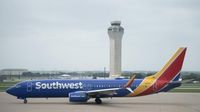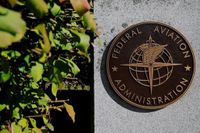On October 13, 2025, travelers at Austin-Bergstrom International Airport found themselves caught in the crosshairs of a federal government shutdown that had already stretched into its thirteenth day. As reported by Reuters and several local news outlets, the Federal Aviation Administration (FAA) issued both a ground delay and a subsequent ground stop for flights arriving at the bustling Texas airport, leaving thousands of passengers frustrated and airlines scrambling to adjust plans on what was forecasted to be one of the busiest travel days of the year.
The trouble began around 4:45 p.m. on Monday when the FAA put in place a ground delay program at Austin-Bergstrom, citing acute staffing shortages that had been mounting as the government shutdown dragged on. The delay, which was set to last through 9 p.m., affected all flights arriving from the contiguous United States. According to the FAA’s Air Traffic Control System Command Center, the average delay reached 40 minutes, with some flights waiting as long as 94 minutes. Airport officials urged travelers to check their flight status frequently and contact airlines directly for updates, as the situation remained fluid throughout the evening.
But the disruption didn’t end there. As the evening wore on, the FAA escalated its response, issuing a ground stop at 8:01 p.m. that was expected to last until 9:15 p.m., with a medium probability of extension. For those unfamiliar, a ground delay means airlines must adjust departure times before flights head to their destinations, while a ground stop halts departures entirely—a far more drastic measure. "Probability of extension is medium (30-60%)," the FAA stated on its website, underscoring the uncertainty plaguing air travel that night.
These measures couldn’t have come at a worse time for Austin’s airport. As noted by local news sources and the Hindustan Times, the delays coincided with the aftermath of the Austin City Limits Music Festival and just days before the Formula 1 Grand Prix—a perfect storm for high passenger volumes. Airport officials estimated that more than 35,000 travelers would pass through the airport on October 13 alone, with over 38,000 expected to depart. The ripple effects of the delays were felt far and wide, as flights into Austin from all over the continental U.S. were caught up in the snarl.
The root of the problem, as reported by Reuters and corroborated by several other outlets, was the ongoing federal government shutdown. The shutdown, sparked by a standoff between President Donald Trump’s Republican Party and Democrats over a spending bill, had forced many government workers—including air traffic controllers and Transportation Security Administration (TSA) officers—to work without pay. The FAA revealed that approximately 13,000 air traffic controllers and some 50,000 TSA officers were still required to show up for work during the shutdown, but morale was low and absenteeism was on the rise as staff called in sick in protest or out of necessity. The situation at Austin’s air traffic control facility was particularly dire, with fewer than half of the certified controllers the FAA says are needed to safely manage air traffic.
And Austin wasn’t alone. According to the Hindustan Times, airports in Dallas, Houston, Nashville, and Philadelphia were also grappling with staffing shortages and delays. In a particularly alarming incident, the air traffic control tower at Hollywood Burbank Airport in California was left unmanned for several hours, highlighting the far-reaching impact of the shutdown on the nation’s aviation infrastructure.
Airport officials and lawmakers alike expressed growing concern. U.S. Congressman Lloyd Doggett, who represents part of Austin, publicly advocated for more robust efforts to address the chronic staffing problems plaguing the airport. The FAA, for its part, pointed to the shutdown as the primary culprit, noting that ongoing staffing shortages had been causing delays at Austin’s airport since at least May 2025.
House Speaker Mike Johnson didn’t mince words about the gravity of the situation, warning, “We’re barreling toward one of the longest shutdowns in American history.” Vice President JD Vance echoed the sentiment, cautioning that the shutdown would result in some “painful cuts” to the federal workforce—a reality that was already playing out in airports across the country.
For travelers, the experience was a mix of confusion and inconvenience. Many were left stranded in terminals, watching as departure boards flashed with delay after delay. The airport’s social media team worked overtime, posting reminders to “keep an eye on your flight status and connect directly with airlines for more info.” Meanwhile, the FAA advised passengers to monitor its website for the latest updates, a task that became something of a ritual for those hoping to make it home—or to their next destination—on time.
As the clock ticked past 9 p.m., there was a glimmer of relief: the ground stop at Austin-Bergstrom International Airport was lifted around 9:30 p.m., allowing flights to resume. But the broader issues remained unresolved. The shutdown continued, and with it, the threat of more delays and disruptions loomed large. The FAA’s advisories made clear that the situation could change at any moment, and travelers were urged to stay vigilant.
Behind the scenes, the shutdown’s impact on aviation went beyond mere inconvenience. Air traffic controllers, already working under stressful conditions, faced mounting pressure as they managed more flights with fewer staff and no paychecks in sight. The strain was palpable, and industry experts warned that safety could eventually be compromised if the situation dragged on much longer.
In the days following the incident, the conversation turned to what could be done to prevent similar disruptions in the future. Lawmakers debated funding solutions, union leaders called for better protections for essential workers, and passengers wondered aloud how long the uncertainty would last. For now, the only certainty was that the nation’s air travel system was being tested in ways not seen in recent memory.
The events at Austin-Bergstrom International Airport on October 13, 2025, served as a stark reminder of the vital role that government workers—often invisible to the public—play in keeping the country moving. As the shutdown wore on, the hope among travelers, airport staff, and policymakers alike was that a resolution would come soon, before the next wave of delays took flight.


